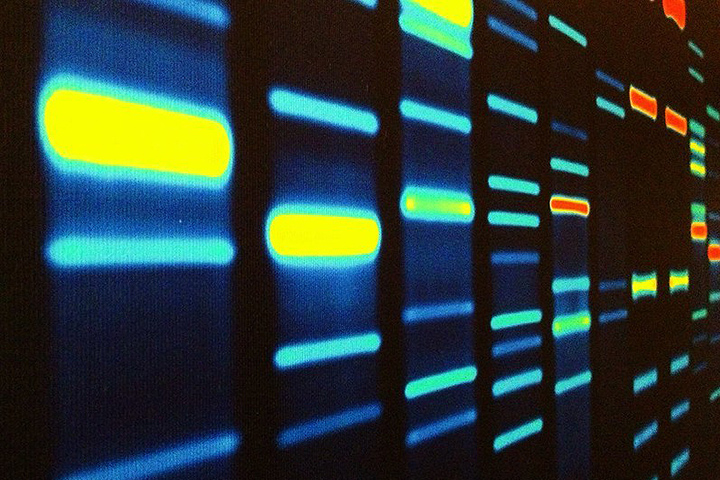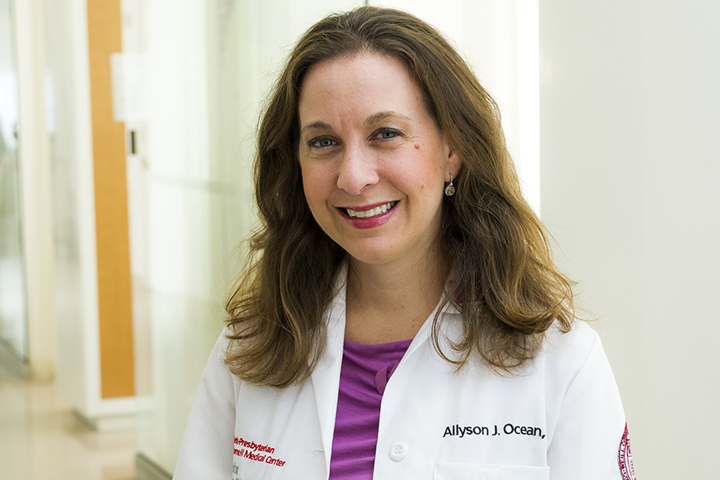Studying One Family’s Mutations May Change Pancreatic Cancer Treatment and Prevention

One of the most prescribed medications today works because of one family’s inherited disorder. Now researchers are looking at genetics to do the same for pancreatic cancer treatment.
Sahar Nissim, M.D., Ph.D., a cancer geneticist and gastroenterologist at Dana-Farber Cancer Institute and Brigham and Women’s Hospital, both in Boston, has already made a great start.
By studying one family in which there were five relatives with pancreatic cancer and multiple family members with other cancers, his team discovered a novel mutation that explained the family’s predisposition to cancer. The knowledge may provide critical clues and new ways to target KRAS-mutated cancer, which accounts for nearly 90 percent of the pancreatic cancer patient population.
How Not-So-Common Can Contribute to the Common Good
Statins are one of the most commonly prescribed medications today, helping millions of those with cholesterol build-up to avoid a heart attack. But few people realize they have a three-year-old boy with a rare familial condition to thank for their preventative treatment.
When he was three, John Despota was found to have inherited familial hypercholesterolemia (FH). His case inspired Michael Brown and Joseph Goldstein to delve into the Despota family’s genetic history to uncover the mechanisms of cholesterol metabolism—work that earned the pair the 1985 Nobel Prize in Physiology or Medicine and led to the development of the drug that has benefitted millions.
Genetic Mutations and Pancreatic Cancer
Most pancreatic cancer develops sporadically as a result of somatic mutations, random changes that accumulate during a person’s lifetime. But about 10 percent of cases are believed to be based on germline mutations, ones that people are born with. A few of these can be attributed to variants in genes known to contribute to cancer risk, such as BRCA2, the gene commonly associated with breast and ovarian cancers. But the vast majority of inherited causes in pancreatic cancer are total mysteries.
Finding families with a single shared germline mutation leading to pancreatic cancer could be a big boon to scientists because it would provide much clearer causality than approaches that identify key somatic mutations. The latter approach is often likened to finding a needle in a haystack—or rather, many different needles that vary widely within and between haystacks.
Pancreatic cancers accumulate many mutations over time, most of which are “passenger mutations” that have nothing to do with the cancer behavior. Identifying which somatic mutations are driving the cancer can be challenging, especially since there may be many within each individual tumor. To further complicate things, additional somatic mutations might elude detection or evolve during the course of treatment.
“Much of pancreatic cancer research over the past 10 years has been focused on mining somatic mutations, trying to find Achilles heels to target for treatment purposes,” Nissim says. “Studying germline mutations that occur in families is an important complementary approach because the causal link between these mutations and cancer is more clear. This strong causal link can give us precious clues into how and why pancreatic cancer occurs, and this understanding can have broadly relevant implications.”
For Nissim, one big find so far has been the RABL3 gene. When his team first made the discovery by studying the single family a few years ago, virtually nothing was known about the gene. By doing deep dives into its genetics and mechanics, Nissim now knows that it regulates the way the protein KRAS moves around inside cells. The knowledge may provide a new way to target the rogue KRAS.
KRAS mutations are incredibly common among pancreatic cancer patients. Mutated KRAS disrupts the crucial MAPK signaling pathway, causing cells to divide uncontrollably and become destructive. In order for KRAS to be synthesized as a protein, it has to be attached to a lipid and anchored to a cell’s plasma membrane. RABL3 regulates this process by which KRAS is directed into position. The family Nissim studied had a mutation in RABL3 that made this process go into overdrive, hurrying KRAS towards the cell membrane for transformation.
“This kinetic change, over decades, leads to a predisposition to cancer,” Nissim explains. “This made us wonder, can we interfere with this process?”
Moving Beyond Treatment to Pancreatic Cancer Prevention
Currently, there is not much that people with heightened risk for pancreatic cancer can do to prevent the disease. They are advised to undergo intensive surveillance via special MRI scans and endoscopic ultrasounds, in hopes that suspect lesions might be detected and removed early. But unlike colonoscopies, which combine early diagnostics and treatment in one minimally invasive and highly effective procedure, pancreatic surveillance and surgery is much more difficult, with fewer guarantees of long-term success.
“The families I work with are very motivated, and very frightened. They know that many relatives died of pancreatic cancer, and it’s frustrating that there are no answers,” Nissim says. “I’d like to be able to give them an explanation, and eventually more options.”
Nissim is working towards pioneering new chemopreventive approaches in pancreatic cancer. The hope is that in the future, people genetically predisposed to developing pancreatic cancer could pop a pill every day to reduce their risk.
“People at risk of heart attacks or stroke can take aspirin or statins, but in pancreatic cancer, we have nothing to offer,” he notes. “We are working very hard to change that. I have a lot of hope for chemoprevention in pancreatic cancer.”
Nissim acknowledges that there’s still far to go, with many years of research. But he’s hopeful that research can lead to new strategies to medically alter the KRAS and other pathways to reduce a person’s risk of developing cancer.
And he believes patients are key to getting there. Nissim believes that patients shouldn’t underestimate their importance in scientific research. He is thankful that so many of the families he works with are willing to participate in research endeavors.
“From just one family, we may have a better understanding of a new way by which the RAS pathway is regulated. This knowledge might one day help individuals with any RAS-driven cancer,” Nissim says. “We are working hard to conquer pancreatic cancer. Studying and understanding family syndromes can be a very powerful strategy in this mission.”






